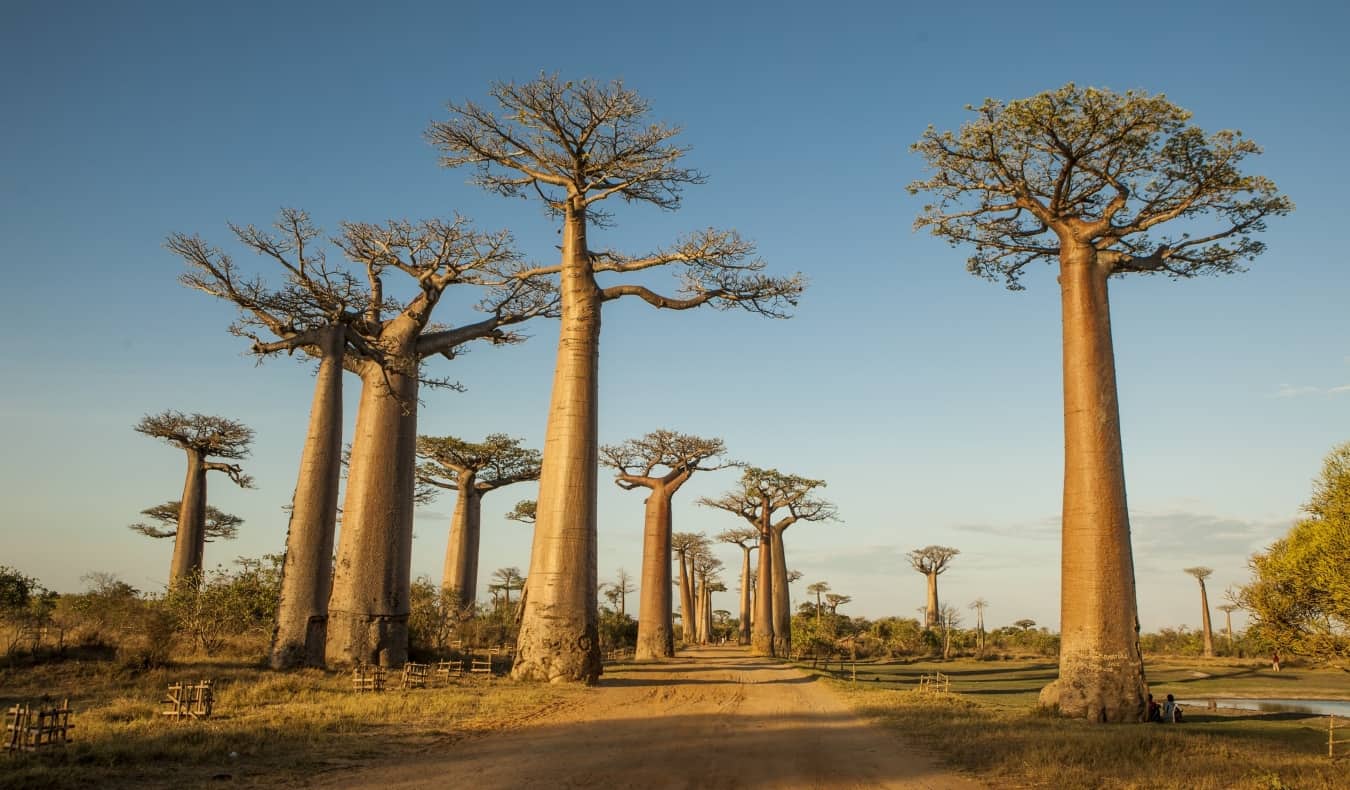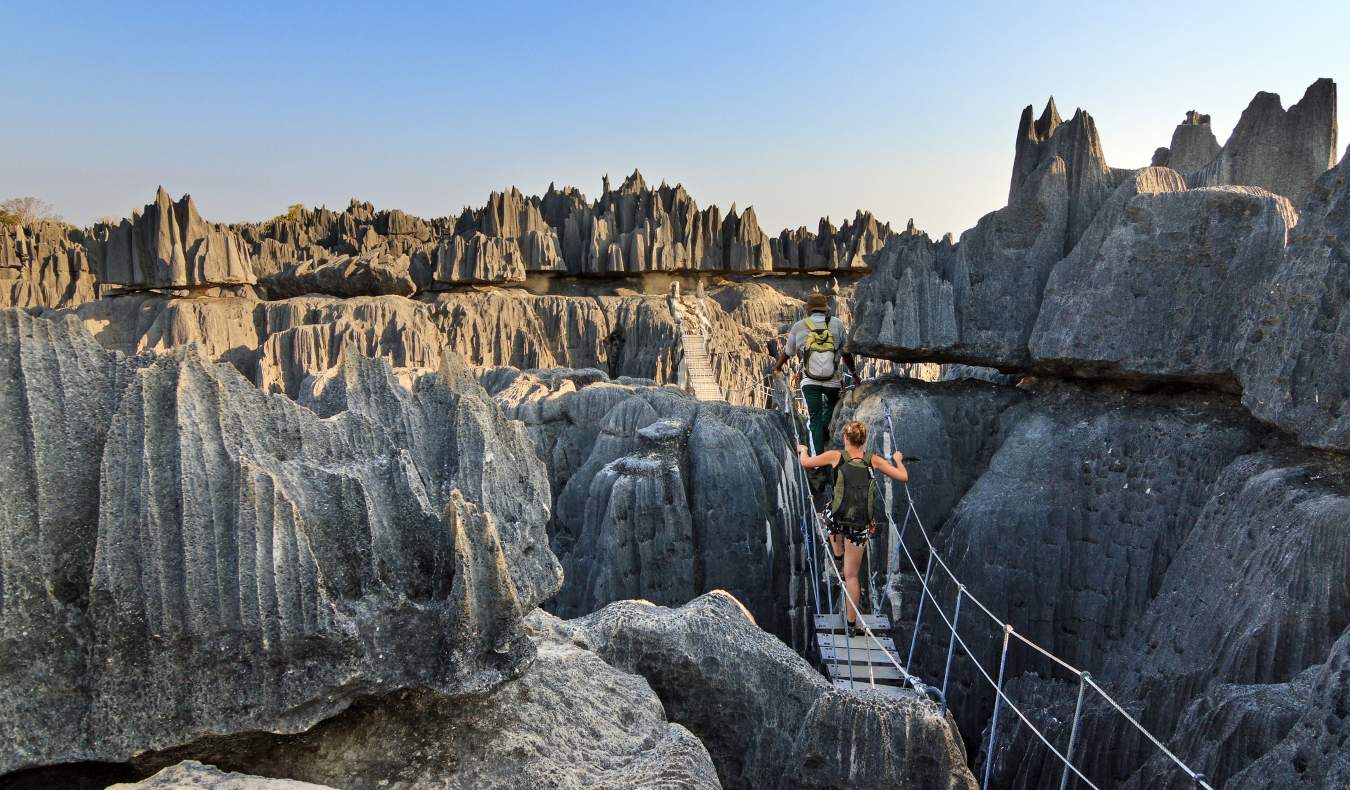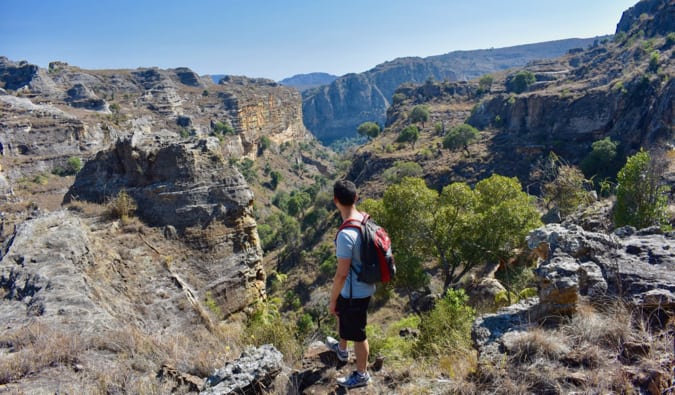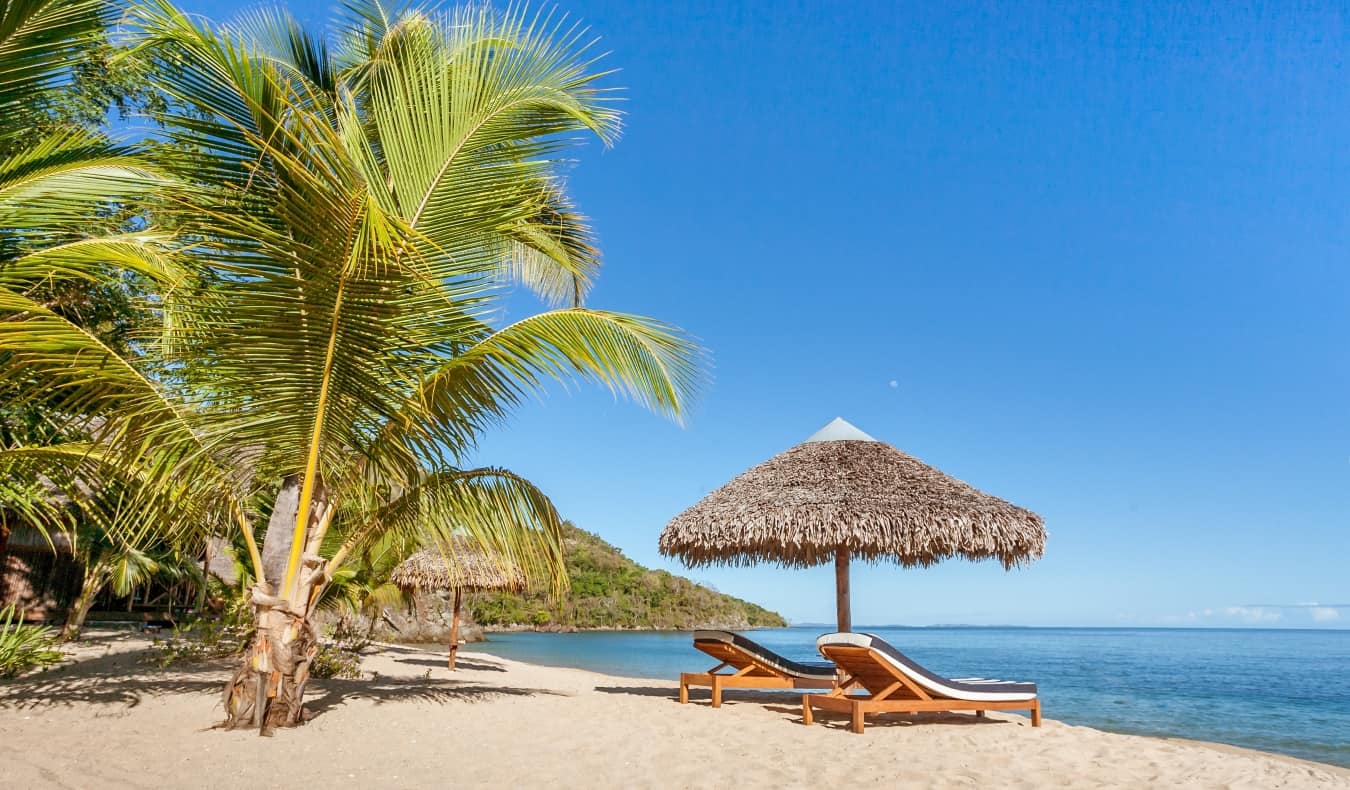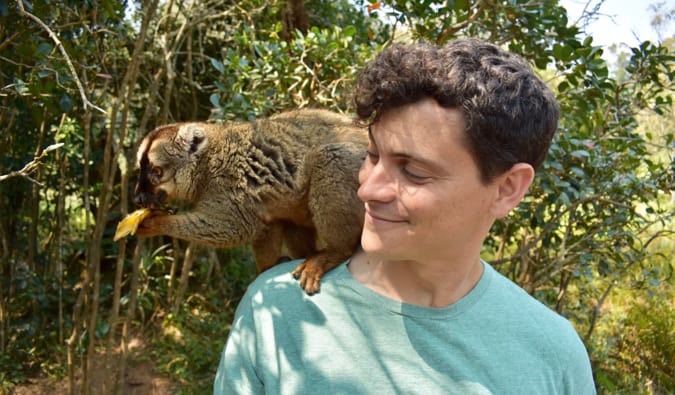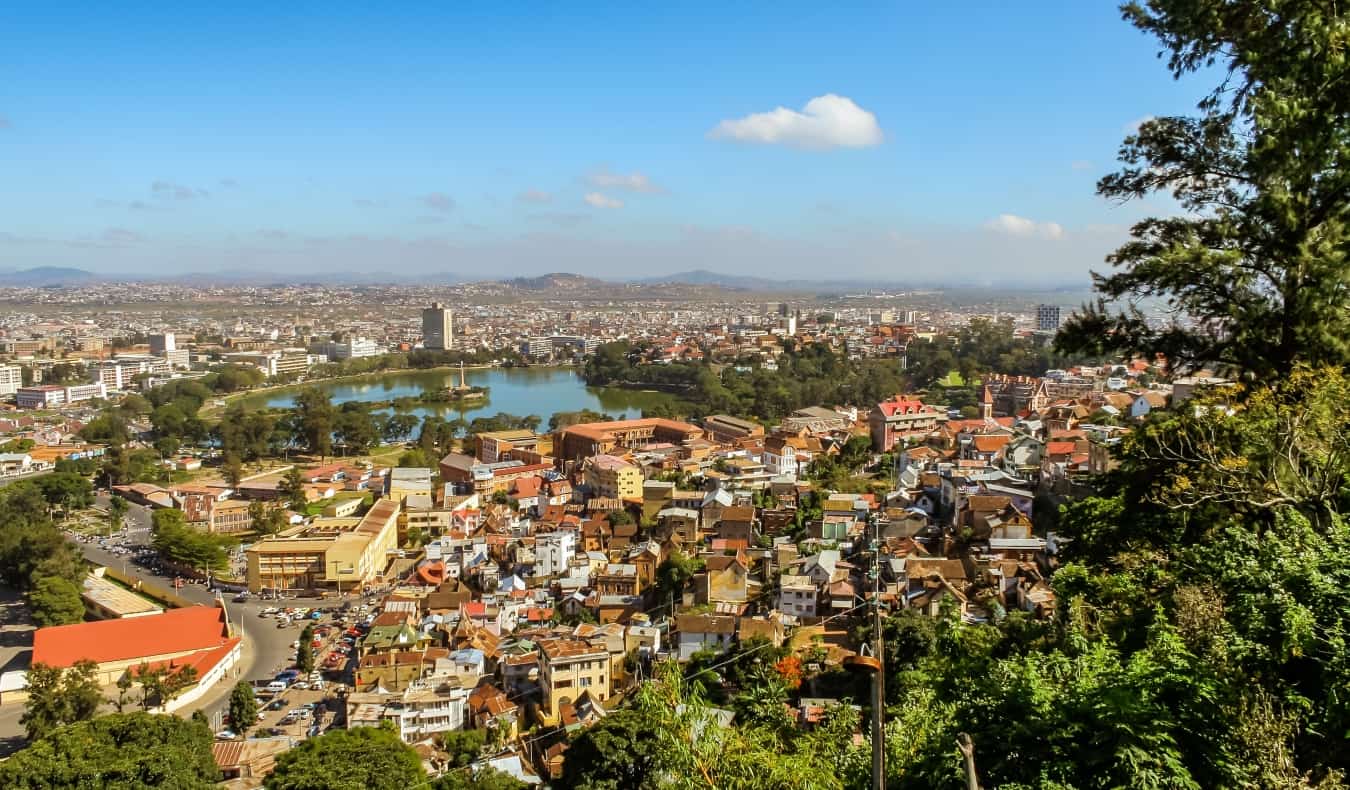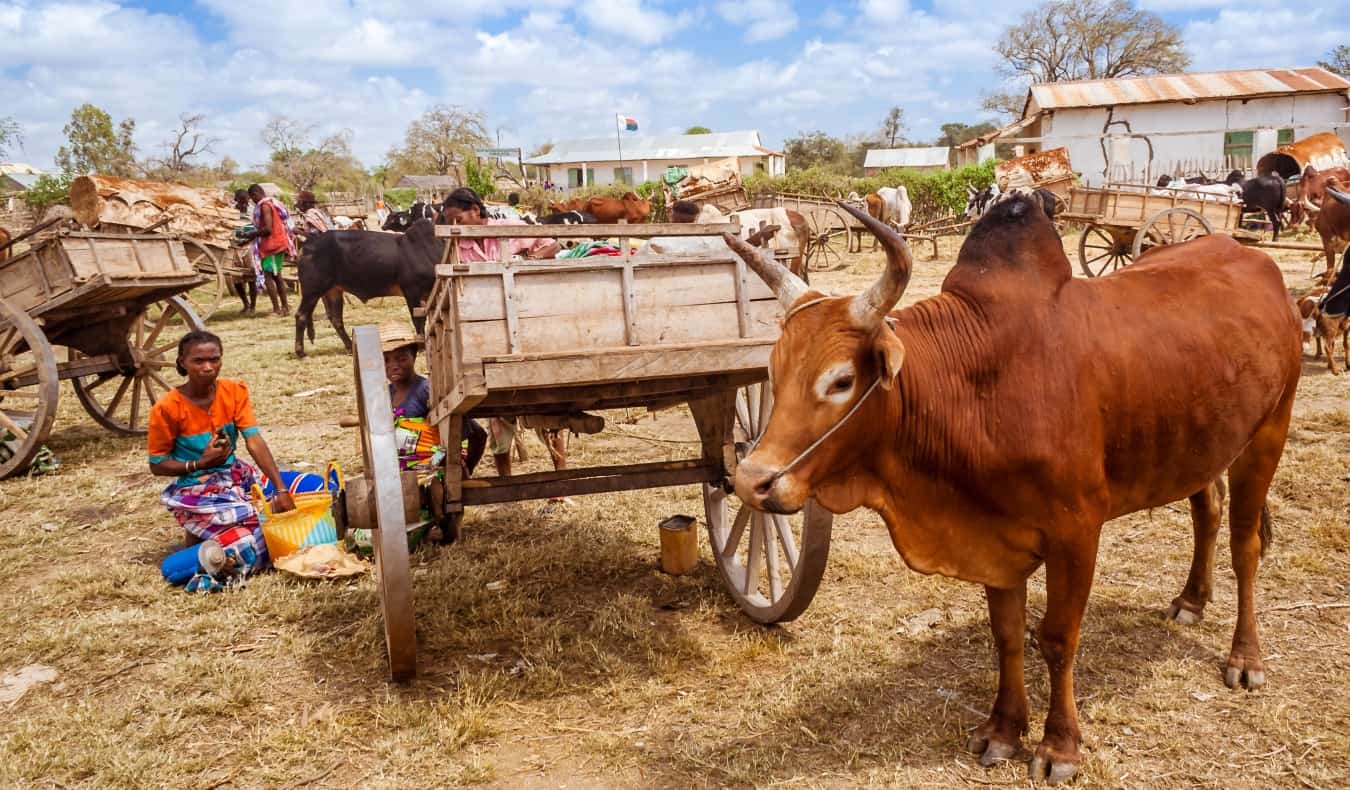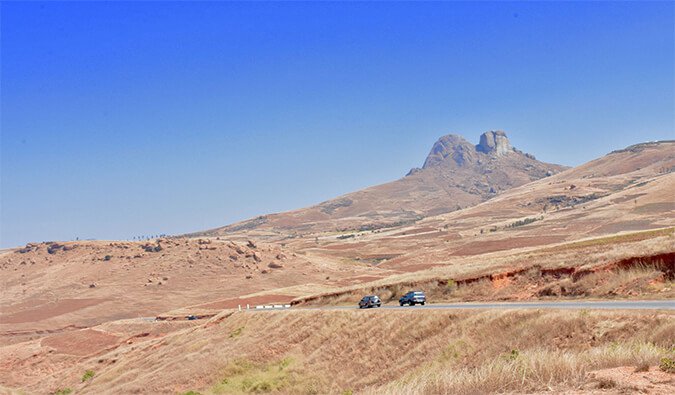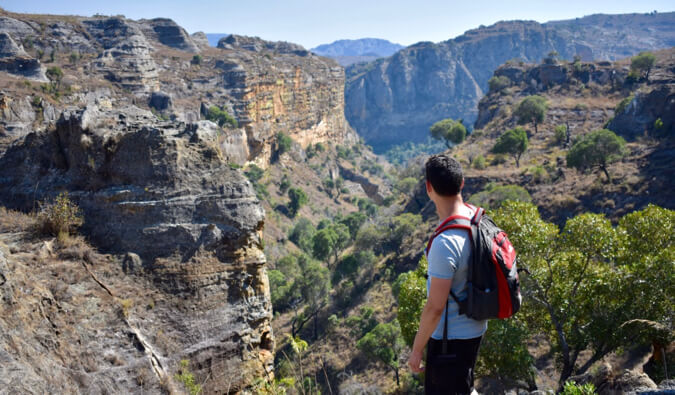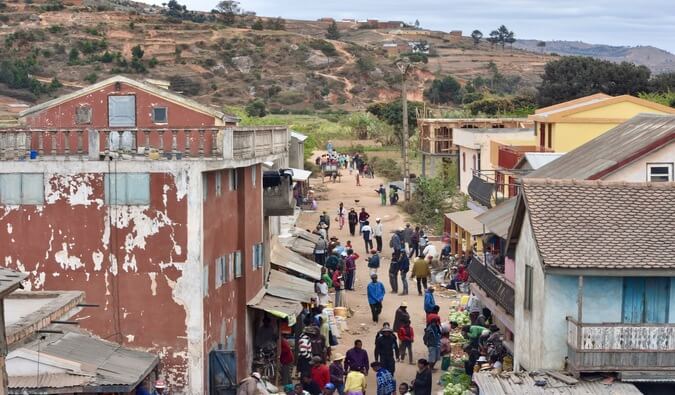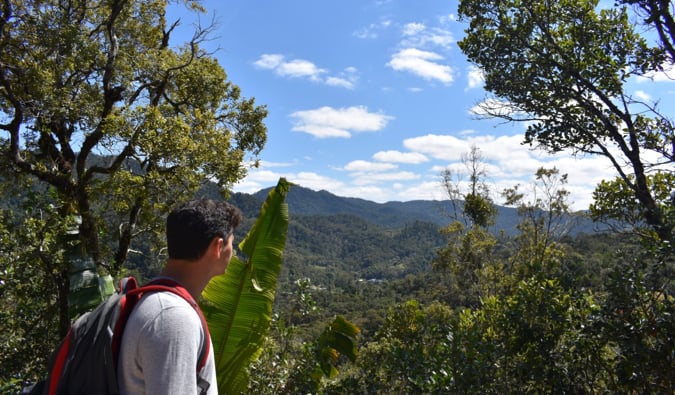
Last Updated: 8/31/23 | August 31st, 2023
Madagascar, a country famed for lemurs, baobab trees, birding, and jungles, offers visitors a rich playground to explore. I was enthralled by its beauty: the sweeping canyons and gorges, the grand waterfalls, and the sheer diversity of the landscape.
One day you’re in a tropical jungle, the next you’re in an arid plain, and a few hours later you’re in a subtropical forest! Plus, there really are seemingly endless varieties of lemurs.
Though Madagascar is remote and finding cheap flights is tricky, with only 350,000 visitors per year, you get a lot of the country to yourself. (And it’s always better to go to a place sooner rather than later because you never know where the next “it” destination is going to be!)
Though I didn’t get as much time there as I’d like (the roads are terrible; it takes eight hours to go 250 kilometers/155 miles), here are some of the wonders you can expect on your visit!
1. Avenue of the Baobabs
Baobab trees are massive trees that can grow 98 feet tall (that’s about the height of an eight-story building) and 36 feet wide and can live up to 1,000 years. The reason they get so wide is so that they can absorb and store water since the climate is so dry (as much as 1,000 gallons of water can be stored in a single tree).
While there are similar trees in the genus, baobabs are completely unique to Madagascar. They’re an impressive sight, especially when your guide casually mentions that the massive one you’re hugging is just a baby — at 400 years old. Unfortunately, the trees are an endangered species due to clearcutting and agriculture.
While the trees can be found throughout the country, this road lined with them (just an hour outside Morondava) — and straight out of a postcard — is one of those iconic images of Madagascar. The best time for photos is during sunrise or sunset. The worst time for crowds? Those same times. Pick your poison.
2. Tsingy
This park, which was declared a UNESCO World Heritage Site in 1990, is near the western coast and is not an easy place to visit. It takes one complete day via four-wheel drive on very rough terrain to get here. It’s very remote, with few tourists.
The plus side? It’s one of the most incredible sites in the country.
Water and wind spent over 200 million years carving the limestone into jagged peaks that look like a row of never-ending knives (hence the name Tsingy, which means “where one cannot walk barefoot”). To get around, you use rope bridges, ladders, and fixed cables. The area also has a lot of caving, and often people pair a trip here with a slow boat down the Tsiribihina River (send photos of that if you go, because sadly, due to time, I missed visiting the river).
Note: The park is only open during dry season (April-November) when the roads are passable.
3. Isalo National Park
Created in 1962 and located in the south-central part of the country, this park features multiple rugged hiking trails (bring water and a hat, as you are exposed most of the time); cliffs, ravines, gorges, and canyons; and plentiful fauna (there are over 100 species of birds here). It’s a Westworld-like park and it blew me away. It was my favorite place in Madagascar.
There are three waterfalls you can cool off in after your walks and a variety of lemur species (they get pretty close as they are desensitized to humans, so watch your food!). You are required to hire a guide (they are found at the entrance), but they were great explainers of the land and the local culture.
Added bonus: the clear sky and lack of light pollution make for some incredible sunsets and star-filled nights. I never saw the Milky Way so clearly.
4. Nosy Be
Nosy Be is the place to go for Madagascar’s trademark beaches. Located five miles off the coast of the main island, Nosy Be is a volcanic island that spans over 310 square kilometers (120 square miles). While it is a volcanic island, no eruptions have occurred in recorded history.
Here you’ll find white-sand beaches and a more upscale, Western environment. There are expensive restaurants, big resorts, and lots of couples and families (which is generally who visits Madagascar). Beach parties erupt each Sunday, and there’s some amazing snorkeling, diving, fishing, and whale watching (the waters around Nosy Be are home to humpback and dwarf fin whales). It’s the quintessential tropical island paradise — with the quintessential cost (but it’s the best beach in the country!).
5. Île Sainte Marie
While everyone goes to Nosy Be for the better beaches and fancier resorts, if you want something a little more local, cheap, and relaxed, check out Île Sainte Marie off the eastern coast.
Known as Nosy Boraha, this former pirate capital (Captain Kidd, the 17th-century Scottish pirate, sank nearby) is a cool island full of little coves, a pirate graveyard, delicious seafood, and a laid-back Caribbean-like atmosphere. It’s home to over 26,000 people and spans over 220 square kilometers (85 square miles). While the beaches aren’t as good as Nosy Be, there’s a beautiful, pristine white-sand beach in the south of the island near the airport that few people visit. This is also the best part of the country for whale watching too (humpback whales come here to breed between July-September).
When coming here, fly. The slow boat is almost always late and lands nowhere near a major town on the mainland. Taking the boat wastes an entire day.
6. Ranomafana National Park
A prime example of a tropical cloud forest, Ranomafana was my second favorite place after Isalo. This is one of the best spots in the country to see lemurs, as it contains twelve species.
Besides lemurs, there were the famous giraffe beetles and lots of birds, chameleons, and other wildlife. As with all national parks in Madagascar, you’re required to hire a guide (you’ll want to anyway so they can point out wildlife to you). Of the multiple trails available, I would do the morning hike, then the afternoon and night hikes at the secondary entrance, as the majority of tours skip that and you get more of the park to yourself. There are also hot springs in the nearby town to relax in.
Due to the park’s popularity, there’s a daily limit on the number of people who can visit, so it’s best to go in the low season. While the park covers 415 square kilometers (161 square miles), you only get to see a few square miles of it, so it can still be crowded, especially in the morning when the tour buses come.
7. Andasibe-Mantadia National Park (Lemur Island)
Located between the capital and the east coast, this area is famous for the Indri lemur, which makes a sound like a howling devil bat that echoes across the jungle. Nearby is also the famous Lemur Island, which has four species of lemurs that have been rescued from being pets.
Established in 1989, the park spans over 60 square miles (155 square kilometers) and is a protected area. It receives over 210 days of rain each year on average. Here the lemurs let you get up close and personal since they have been domesticated. However, they are also released back into their natural habitat to be wild again when they’re ready. But, if for some reason they can’t adapt, they live freely in the park and are safe from outside threats as logging and agriculture have isolated the park from nearby natural landscapes, threatening the wildlife that calls the park home.
8. Toliara
Down on the west coast, this small port town is famous for the expats who move there, the pizza (it’s a seriously popular dish in the country), and for being a launching pad for diving excursions to the Great Reef offshore. There’s not much else to do except sit by the beach or go into the water.
The city was founded in the 17th century by French buccaneers (pirates) for commercial trading purposes, with the city expanding during the French occupation.
The drive getting here on the N7 (the only north-south highway) is also pretty amazing, as you can take in Ranomafana, Isalo, and other spots along the way.
9. Antananarivo
Home to over 1.6 million people, Antananarivo is the capital of the country and the largest city in Madagascar. Prior to French colonization in 1897, the city was already a thriving cultural hub. After the country attained independence in 1960, the city’s population boomed.
Today, it’s a chaotic place with not a lot to do, but it’s a good stop to see the lemur park and the Rova (the old palace), get a sense of the international scene in the city, and use it as your launching pad for stops further afield.
To learn more about the city and Malagasy culture, take a private walking tour guided by a local. You’ll come away with a much deeper understanding of Malagasy people and their culture.
10. Overload on zebu
Zebu is a type of cow with a large hump on its back. Originally from Asia, it’s more of a work cow, like an ox, and you’ll see them all over the country. They’re not only important for farming and food but have evolved into a cultural symbol for the country. They are even used as dowries in weddings. It’s the only kind of beef in the country and is always on the menu (along with healthy portions of rice).
However, the meat is really tough, thanks to all the work the animals do in the fields, and so it’s best in a stew or as a steak. I can’t say I loved it. But often it was either that or pasta. I had so much zebu that I’m good for the rest of my life.
11. Drive the N5
Heading north along the east coast from Toamasina to Maroantsetra, this road — and I use that word loosely — is a potholed-filled expedition through some of the rawest and pristine areas of Madagascar and your best chance to see the famous aye-aye lemur. The road here meanders through dense jungle, over rivers, and through tiny towns in one of the most undeveloped parts of the country. Stretching 250 miles (400 kilometers), it’s said that the Route Nationale 5 (N5) is the worst road in the country. I’m inclined to agree!
You’re really off the beaten path here. Many sections are often impassable so budget a lot of time. The road quickly turns bad outside of Toamasina and doesn’t get much better as you progress. They say it takes over 24 hours to drive the entire “road.” I’m surprised it’s even that quick!
12. Go whale watching
Between June and November, more than 7,000 humpback whales migrate from Antarctica to Madagascar to breed (they can migrate upwards of 25,000 kilometers/15,500 miles each year). The whale watching is some of the best in the world. While we were taking the boat to Île Sainte Marie, we saw a couple breach the water and it was stunning to see.
Adults can grow up to 16 meters (52 feet) and weigh over 30 metric tons (66,000 pounds). You can also find the less-common (and recently discovered) Omura whale (dwarf fin whale) around Madagascar as well.
Best of all, with so few tourists in the country, you aren’t one of 9,384,732 boats vying for a photo!
13. Enjoy the long drives and vistas
With the roads being so bad, you are going to spend a lot of time in a car. As I said, it takes around eight hours to go a mere 250 kilometers (155 miles)! The upside is that you will get to enjoy long drives past scenic vistas of mountains and gorges, lush rainforests, and valleys lined with terraced rice paddies. I wanted to get a lot of reading done, but I was often pulled away by the views. Madagascar was just too pretty!
While I hate long drives, I did enjoy pulling over every few minutes to take too many photos of every mountain and valley I saw.
Madagascar has a lot to see and do. Despite the years of environmental degradation (which remains a serious, serious problem), you can still see a lot of wonderful native plants and exotic animals that are indigenous to the third largest island in the world. Though Madagascar’s quite a journey to get to, these highlights will give you a trip to remember.
Book Your Trip to Madagascar: Logistical Tips and Tricks
Book Your Flight
Use Skyscanner to find a cheap flight. They are my favorite search engine because they search websites and airlines around the globe so you always know no stone is left unturned.
Book Your Accommodation
You can book your hostel with Hostelworld as they have the biggest inventory and best deals. If you want to stay somewhere other than a hostel, use Booking.com as they consistently return the cheapest rates for guesthouses and cheap hotels.
Don’t Forget Travel Insurance
Travel insurance will protect you against illness, injury, theft, and cancellations. It’s comprehensive protection in case anything goes wrong. I never go on a trip without it as I’ve had to use it many times in the past. My favorite companies that offer the best service and value are:
- Safety Wing (best for everyone)
- Insure My Trip (for those over 70)
- Medjet (for additional evacuation coverage)
Looking for the Best Companies to Save Money With?
Check out my resource page for the best companies to use when you travel. I list all the ones I use to save money when I’m on the road. They will save you money when you travel too.
Want More Information on Madagascar?
Be sure to visit our robust destination guide on Madagascar for even more planning tips!
Note: I went to Madagascar with Intrepid Travel as part of our ongoing partnership. They paid for the tour and my expenses during the trip. I paid for my flights to and from Madagascar.
